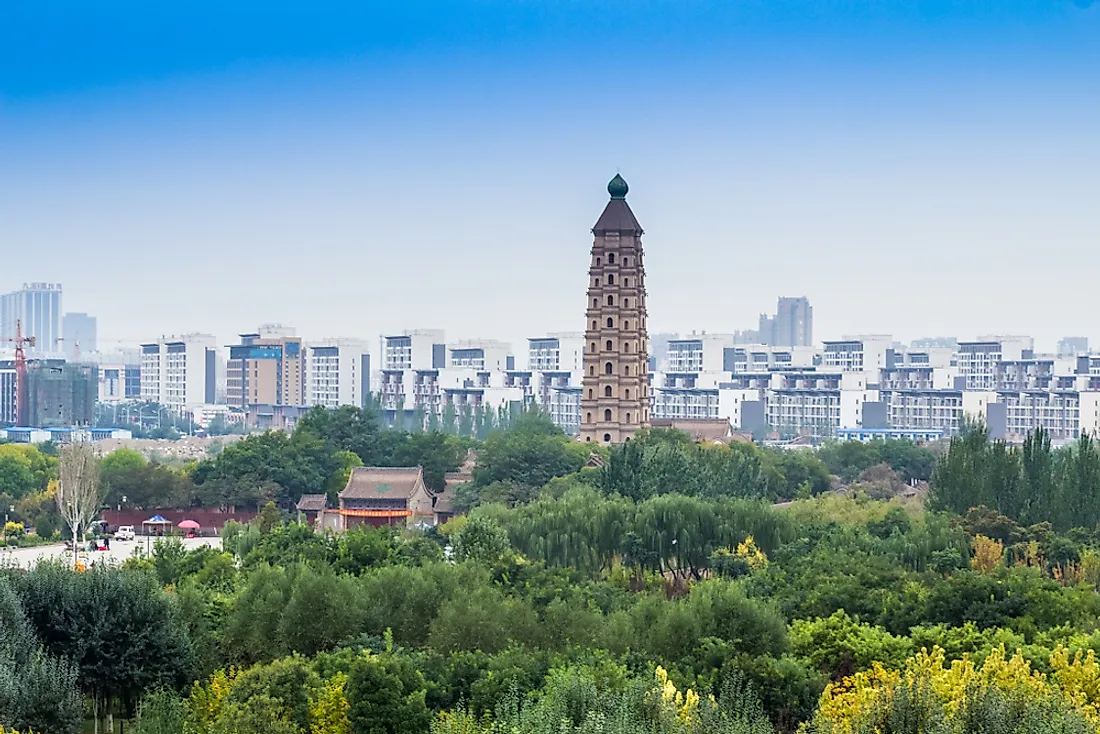Yinchuan – The Capital Of The Ningxia Hui Autonomous Region

The Ningxia Hui Autonomous Region, commonly referred to simply as Ningxia, is an autonomous region in northwest China. Ningxia was previously a province, but it was incorporated into Gansu in 1954, before being reconstituted into an autonomous region four years later. Over 20% of the Hui population resides in Ningxia. The autonomous region is surrounded by Inner Mongolia, Gansu, and Shaanxi. Ningxia occupies an area of 25,637 sq mi and has an estimated population of 6,620,000.
Capital Of Ningxia
The capital city of the Ningxia Autonomous Region is Yinchuan. It was the former capital of the Western Xia Empire. Yinchuan occupies an area of about 3,426.51 sq mi. The city’s name means "silver river." The city has favorable conditions for farming and beautiful natural scenery. Yinchuan is the permanent location of China-Arab Expo, an international platform for economic and cultural exchanges between the Arab nations and China.
History of Yinchuan
The city was originally a county known as Fuping during the first century BCE. Yinchuan’s name was changed to Huaiyuan during the sixth century CE. Yinchuan has been under various dynasties including Tang, Ming, and Qing dynasties among others. Yinchuan was the capital of Ningxia when it was formed in 1928. The city became part of Gansu province after the Ningxia province was abolished in 1954. Yinchuan became a capital again in 1958 after the Ningxia Hui autonomous region was established. Traditionally, the city was a commercial and administrative center. Yinchuan had various commercial enterprises by the 1950s.
Geography of Yinchuan
Yinchuan is situated at the center of the Ningxia plain, and it’s sheltered from the Mongolia deserts by the Helan Mountains. The Yellow River stretches across the city from the southwest to the northwest. The average elevation of Yinchuan is about 3,608 ft. Yichuan’s urban center is located about halfway between the edge of Mount Helan and the Yellow River.
Climate of Yinchuan
The region experiences a cold desert climate with an annual rain of about 7.32 inches. The city has distinct seasons with short summers, late springs, and Cold, dry winters. The annual mean temperature of the region is about 9 °C. The city’s diurnal temperature variation is quite significant due to aridity which contributes to the sunny climate. Yinchuan receives about 2,906 hours of bright sunlight all year long and 150 frost-free days.
Demographics of Yinchuan
The city is home to a huge percentage of the Muslim Hui people who contribute about a third of the population. The city has a population of about 1.99 million inhabitants. The Islamic influence is evident in everything in Yinchuan including the cuisine, road signs, and architecture. There are over 500 mosques in Yinchuan.
Economy of Yinchuan
Yinchuan had a gross domestic product (GDP) per capita of $4,526 in 2008, ranking 197th in China. As a site for the China-Arab States Cooperation, the city has excellent opportunities to grow as a business center for Arab states and China. Yinchuan is a smart city which uses a facial-recognition system for public transport payment, digital citizen-service centers, and connected trash bins. The main tourist attractions in the city include China Western film studios, Western Xia tombs, and the Sand-lake.











